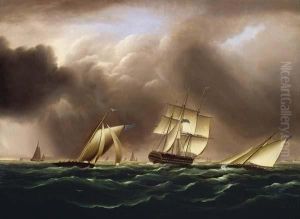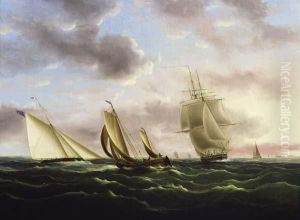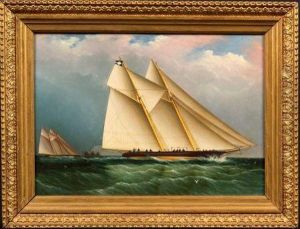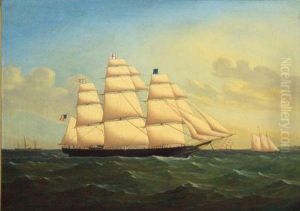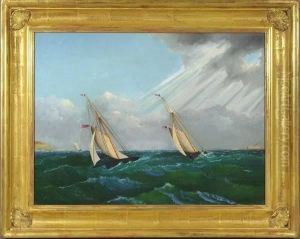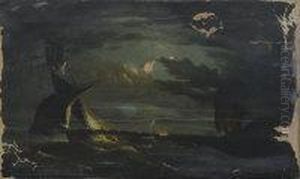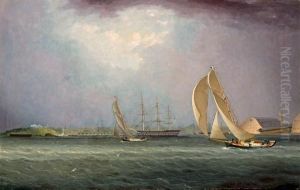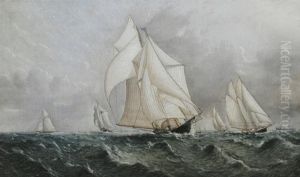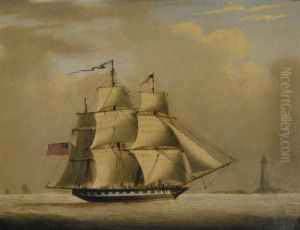James Buttersworth Paintings
James Edward Buttersworth was an English painter who specialized in maritime art, depicting ships and naval battles. He is considered one of the foremost maritime artists of the 19th century. Buttersworth was born in 1817 in London, England. He came from a family with a strong artistic tradition; his father, Thomas Buttersworth, was also a well-known maritime painter, which undoubtedly influenced James's career path.
Buttersworth's early life was spent in London, where he honed his artistic skills. By the 1840s, he had moved to the United States and settled in the New York City area, where he was drawn to the bustling ports and the expanding American maritime industry. His American career began during a period of great change in maritime technology, including the transition from sail to steam power and the growth of the American clipper ship, which provided rich subject matter for his paintings.
Throughout his career, Buttersworth was known for his meticulous attention to detail and his ability to capture the essence of the sea and the vessels that sailed on it. His works often featured regattas, yachting events, naval battles, and merchant ships, rendered with accuracy and a sense of movement that conveyed the drama and action of seafaring life.
Buttersworth's paintings were in high demand during his lifetime, and he exhibited at various institutions, including the National Academy of Design in New York. His works have continued to be highly prized by collectors and maritime enthusiasts, and they are held in the collections of many prestigious museums, such as the Mystic Seaport Museum in Connecticut and the National Gallery of Art in Washington, D.C.
James Edward Buttersworth passed away in 1894, leaving behind a rich legacy of maritime art that continues to be celebrated for its historical value and artistic excellence. His influence extends beyond his own works, as he helped define maritime painting in the 19th century and inspired future generations of artists.
